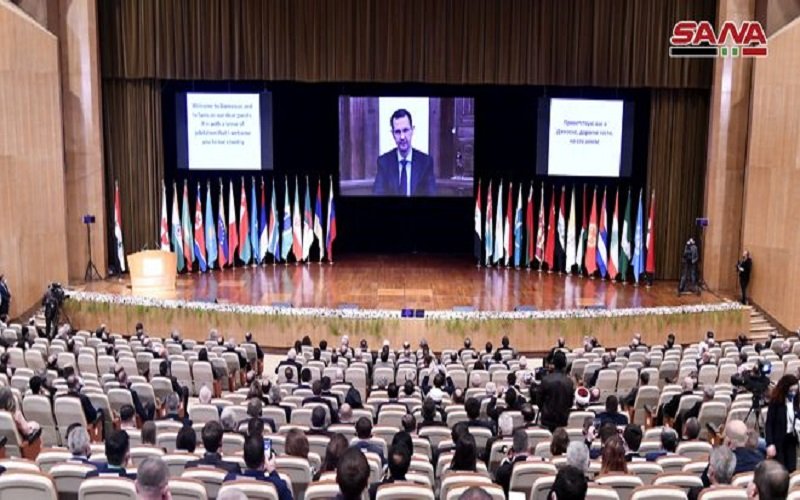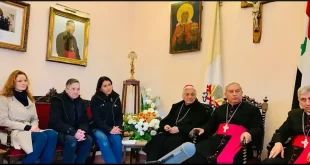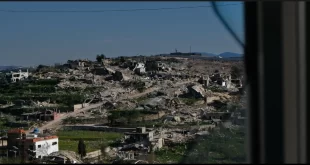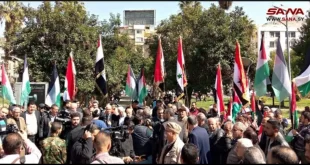The following article, by Andrew Korybko, was originally published on Global Research, November 12, 2020:

The kinetic phase of the Hybrid War of Terror on Syria has mostly drawn to a close, as evidenced by the milestone event of the country hosting an international conference on the return of refugees, which resulted in several significant outcomes that speak to the masterful execution of its “balancing” strategy and raise hope that the Arab Republic will eventually transform into the Eastern Mediterranean terminal point of China’s visionary W-CPEC+ corridor across Eurasia.
Strategically Disarming “Weapons Of Mass Migration”
Syria’s international conference on the return of refugees is a milestone event for the country’s war which shows that the kinetic phase of the Hybrid War of Terror against it has mostly drawn to a close. President Assad’s keynote speech saw the Syrian leader thanking his Russian and Iranian wartime allies for their help getting to this point and encouraging his compatriots abroad to finally return home. He claimed that some of their host countries are exploiting them for financial and other reasons, strongly hinting that they’re being used against their will as “Weapons of Mass Migration” like Ivy League scholar Kelly M. Greenhill earlier described such a phenomenon. In connection with that, President Assad condemned those states which continue to impose illegal sanctions against the Arab Republic, which has disincentivized some refugees from returning home and thus results in artificially perpetuating this historic humanitarian crisis that was initially sparked by their external war of regime change aggression against his people through terrorist means.
Syria’s “Balancing” Act
Thankfully, Syria can count on its Russian and Iranian wartime allies to help reconstruct the ruined country and thus facilitate the return of millions of refugees to their homeland. To this end, Russia promised to allocate $1 billion as well as open up a trade mission in Damascus while Iran suggested setting up an international fund for this purpose. Both countries seem poised to enter into a “friendly competition” with one another for reconstruction contracts and market space which can only work out to Syria’s ultimate benefit. The Arab Republic is therefore expected to retain its carefully calibrated “balancing” act between them, wisely doing its utmost to prevent the emergence of any complete dependence on either of them in the future. This strategy is consistent with what it’s always pursued over the decades and represents its masterful execution which too many other small- and medium-sized states previously attempted but to no avail. Even worse, many of Syria’s peers saw this strategy backfire on them, thus leading to either their ruin or full dependence on one partner.
Full credit goes to Syria’s world-class diplomats for being able to manage such a difficult policy with such success. Not only are they “balancing” between Russia and Iran, but they also managed to attract the important participation of other countries in their international refugee conference, most curious of which for some observers is Pakistan. Those who only casually follow Syrian affairs might have missed it, but Islamabad recently dispatched massive medical aid to the Arab Republic. This and its participation in the international conference show that the “global pivot state” (which the author previously referred to it as) is capable of bold foreign policy moves independent of its close American, Saudi, and Turkish partners. Pakistan, just like Syria, is also practicing its own “balancing” act between its aforementioned three traditional partners and its three newest ones of Russia, China, and Iran. In fact, it can be argued that Pakistan and Syria are in the process of synergizing their respective “balancing” strategies for the betterment of Eurasia.
“Pakistan’s Serendipitous Chance In Syria”
To explain, not only is Syria “balancing” between Russia and Iran, but also between India and Pakistan too. Although Damascus and Delhi have a long history of close relations, Presidential Advisor Bouthaina Shabaan told the Hindustan Times in August 2017 that her country is becoming hesitant about India’s role in its reconstruction after Prime Minister Modi’s highly publicized trip to “Israel” where he did everything from sign intergovernmental deals solidifying their de-facto alliance to even walking barefoot with Netanyahu along the beach. The author realized at the time that this is “Pakistan’s Serendipitous Chance In Syria” whereby Islamabad could flex its anti-Zionist credentials to present itself as a much more credible partner than pro-Zionist Delhi in pursuit of strengthening the two state’s historic relations that reached their high point in 1974 after a Pakistani pilot flying a Syrian jet shot down an “Israeli” fighter flying over the occupied Golan Heights. Syria’s diplomats were evidently receptive to Pakistan’s outreaches, hence the steady improvement of ties.
The Winding Road To W-CPEC+
It’s not just nostalgia for their Old Cold War-era ties nor their shared hatred of “Israel” that’s bringing them closer together nowadays, but pro-Chinese Silk Road pragmatism. The China-Pakistan Economic Corridor (CPEC) is the flagship project of China’s Belt & Road Initiative (BRI), and its western branch corridor (W-CPEC+) through Iran has the chance of not only reaching Russia by running parallel with the stalled North-South Transport Corridor (NSTC) across Azerbaijan but can also extend as far as Syria via Iraq. China is the little-discussed third economic force apart from Russia and Iran which is engaged in a “friendly competition” with its partners to develop Syria, and the improvement of Syrian-Pakistani relations as is presently happening could result in W-CPEC+ extending from the Pacific Ocean to the Eastern Mediterranean through Iran, Iraq, and Syria, all of which are allied with one another. It’ll of course take a lot of political will from all sides — not least of all Pakistan — to see this ambitious vision through, but if successful, then it could revolutionize Mideast geopolitics.
All five countries — China, Pakistan, Iran, Russia, and Syria — would benefit from this outcome. The People’s Republic is the world’s second-largest economy and actively eyeing more positions in the Eastern Mediterranean to complement its prospective ones in “Israel”, albeit via more geopolitically reliable mainland routes than the maritime ones connecting it to the self-professed “Jewish State”. Pakistan has an interest in bolstering its credential as the “global pivot state” by having CPEC serve as the platform for integrating Eurasia more closely together. Iran, which is desperately seeking all manner of sanctions relief, is reportedly negotiating a gargantuan economic agreement with China and would certainly benefit by facilitating more East-West trade through its territory. As for Russia, its recent control over Tartus means that it could profit from any Syrian export of Chinese products through that port. As for the Arab Republic itself, its expected benefit is that this vision would accelerate its reconstruction and allow it to finally actualize its pre-war “Five Seas Strategy”.
Concluding Thoughts
All told, Syria’s international conference on the return of refugees was about much more than just its titular topic. Reading between the lines of the details that have since been revealed about this milestone event, it was actually a masterclass in Syria’s “balancing” strategy. The Arab Republic proved that its diplomats are among the most highly skilled in the world after successfully “balancing” between Russia and Iran, as well as India and Pakistan, all with the aim of fulfilling its visionary “Five Seas Strategy” which some argue was partially responsible for provoking the Hybrid War of Terror that’s been viciously waged against it for almost an entire decade already. In the best-case scenario, Syria will eventually serve as the Eastern Mediterranean terminal point of the W-CPEC+ corridor connecting that strategic body of water with the Pacific Ocean via a several-country-long mainland commercial corridor. The successful fulfillment of this vision would revolutionize not only Mideast geopolitics, but also Eurasian geopolitics as a whole, which thus makes it an urgent priority for all.
*
This article was originally published on OneWorld.
Andrew Korybko is an American Moscow-based political analyst specializing in the relationship between the US strategy in Afro-Eurasia, China’s One Belt One Road global vision of New Silk Road connectivity, and Hybrid Warfare. He is a frequent contributor to Global Research.
 Syria Support Movement solidarity with the Syrian people
Syria Support Movement solidarity with the Syrian people




